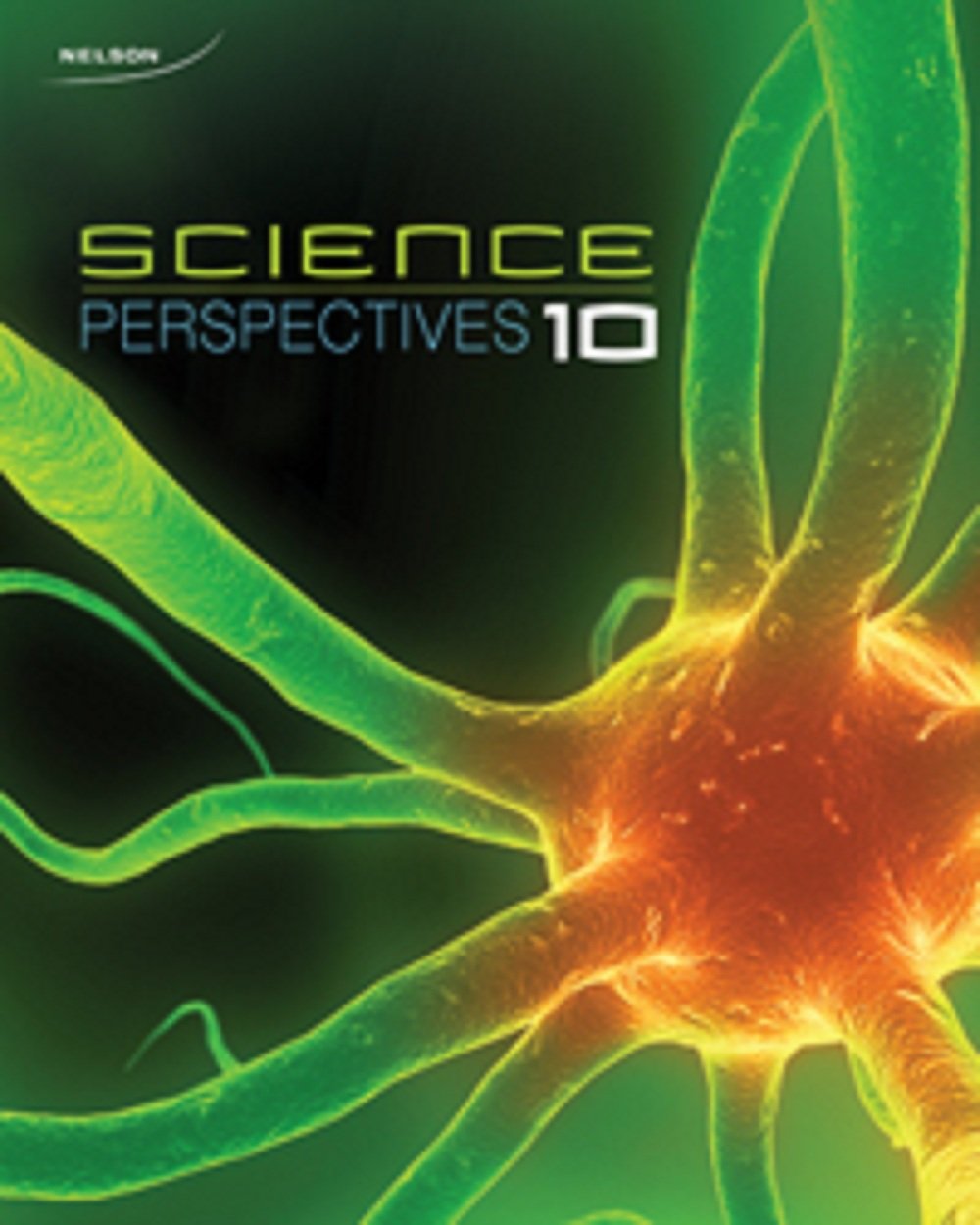
Nelson Science Perspectives 10
1st Edition
ISBN: 9780176355289
Textbook solutions
All Solutions
Page 164: Self-Quiz
Exercise 11
Result
1 of 1
to prevent water loss from evaporation
Exercise 12
Result
1 of 1
Meristematic cells are found in roots, shoots, and stems
Exercise 13
Step 1
1 of 4
a) the digestive system breaks down food and extracts nutrients from it to supply energy to cells
Step 2
2 of 4
b) the circulatory system supplies oxygen and heat throughout the body
Step 3
3 of 4
c) the nervous system registers stimuli and formulates a response which is sent throughout the body to respond to the stimuli
Result
4 of 4
a) the digestive system breaks down food and extracts nutrients from it to supply energy to cells
Exercise 14
Result
1 of 1
No, eukaryotes have a nucleus while prokaryotes do not
Exercise 15
Result
1 of 1
We don’t see piles of dead skin because once dead skin cells leave the body they are called “dust”
Exercise 16
Step 1
1 of 3
a) muscle cells arrange in striations, where white blood cells stay separated in the blood stream. Blood cells flow and muscle cells only expand and contract
Step 2
2 of 3
b) Since muscle cells form striations they can all expand and contract together to perform needed functions. White blood cells staying separate allows them to flow throughout the bloodstream until they are needed to fight infection and disease.
Result
3 of 3
a) muscle cells arrange in striations, where white blood cells stay separated in the blood stream. Blood cells flow and muscle cells only expand and contract
Exercise 17
Result
1 of 1
Wear sunblock, eat healthy food, don’t smoke or vape, don’t drink alcohol
Exercise 18
Step 1
1 of 3
a) Oxygen diffuses into the bloodstream in the lungs via diffusion since the concentration of oxygen in the blood is much less than that of the atmosphere once the oxygen-rich blood circulates through the body and loses the oxygen.
Step 2
2 of 3
b) Carbon dioxide diffuses from cells into the bloodstream in the opposite direction of oxygen diffusion so that when the blood recirculates to regain oxygen, carbon dioxide can diffuse into the lungs and be exhaled from the body
Result
3 of 3
a) Oxygen diffuses into the bloodstream in the lungs via diffusion since the concentration of oxygen in the blood is much less than that of the atmosphere once the oxygen-rich blood circulates through the body and loses the oxygen.
Exercise 19
Result
1 of 1
I would expect a flowering plant to produce more pollen since it is less likely that an insect will interact with the particular flower than it is for wind to interact with a particular flower.
Exercise 20
Step 1
1 of 3
Warming up muscles may mean to get the lactic acid out of your muscles so that they have the capacity to make more and release CO2 as the cells within your muscles use oxygen and energy to perform the movement function.
Step 2
2 of 3
I agree with the friend that it is important to stretched and get warmed up before strenuous exercise to prevent injury and achieve maximum performance
Result
3 of 3
Warming up muscles may mean to get the lactic acid out of your muscles so that they have the capacity to make more and release CO2 as the cells within your muscles use oxygen and energy to perform the movement function.
Exercise 21
Result
1 of 1
It is helpful to screen for many diseases at once so that if a positive result comes back, that particular thing can be tested for individually to confirm the results. This saves time and can be critical in fighting some diseases before true harm can be done
Exercise 22
Result
1 of 1
Cells undergo mitosis to split one parent cell into two daughter cells. Prophase occurs first, where chromosomes condense and become visible. This is followed by metaphase where chromosomes line up at the metaphase plate. Next is anaphase, where sister chromatids move toward opposite poles. Next is telophase, where chromosomes de-condense at opposite poles. Lastly, cytokinesis occurs where the cell splits in two. Next interphase occurs until mitosis occurs again
Exercise 23
Result
1 of 1
By releasing chemical smells or traces, pollinators can be attracted towards them even at night
Exercise 24
Result
1 of 1
How much radiation is caused by x-rays? Can it be compared to sources we are familiar with every day? Why are x-rays used instead of other methods? What protection am I required to wear?
unlock

